17+ Medical Chart Examples to Download
Different people have different levels of understanding. Many people are considered as visual learners, meaning they learn better through visual cues. A chart is among such visual representations of information.
Charts come in different types or kinds. Bar charts, pie charts, line charts, and flow charts are just few common examples of charts we are already familiar with. And as we know, there are different uses of charts, one of which we are going to discuss in this post.
Medical Center Organizational Chart Example

Basic Medical Chart Template
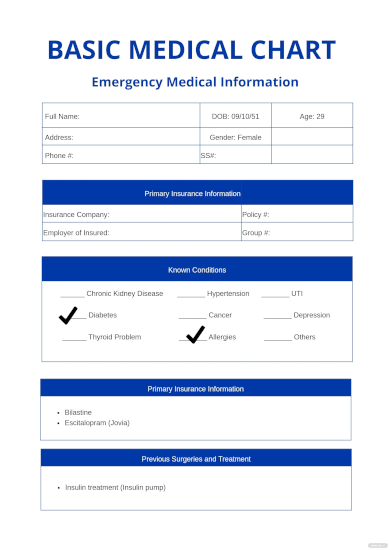
Veterinary Medical Chart Template
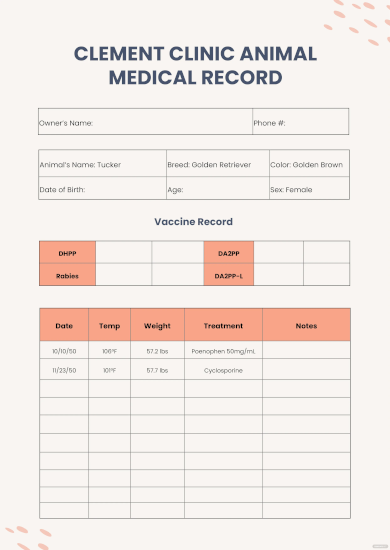
Patient Medical Chart Template
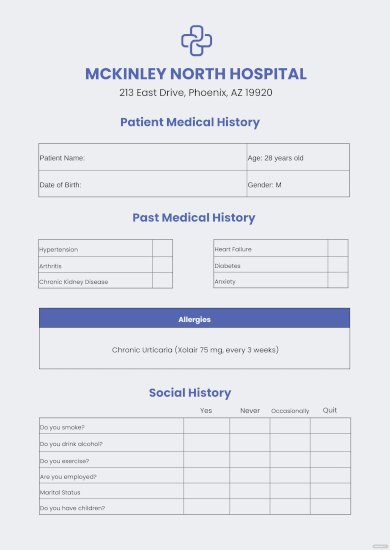
Patient Medical Chart
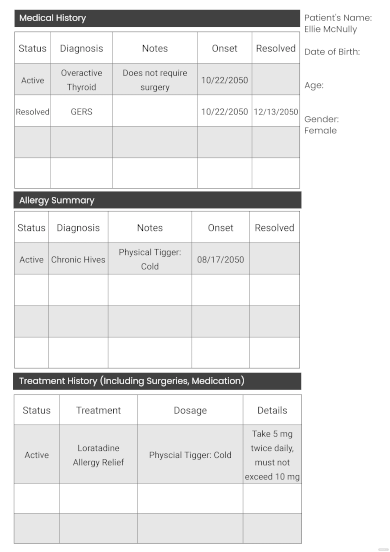
Printable Medical Chart
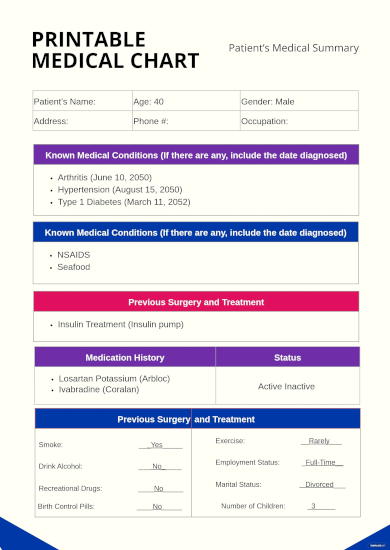
Medical BMI Chart Template
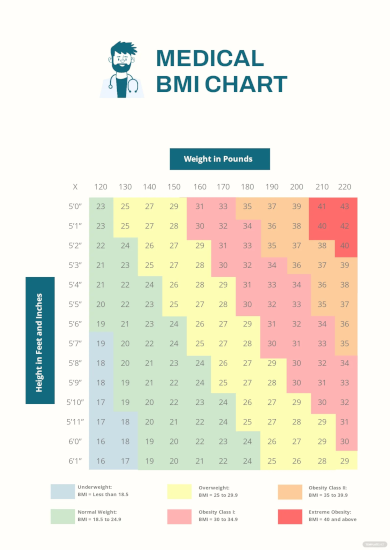
Daily Medical Chart Template
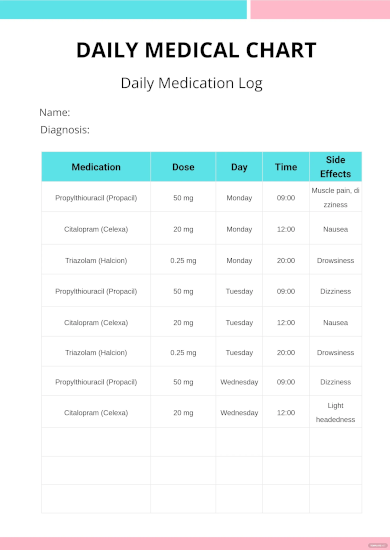
Blank Medical Chart
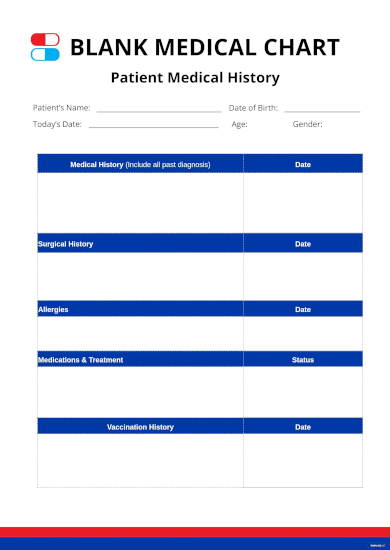
Simple Medical Gantt Chart Template
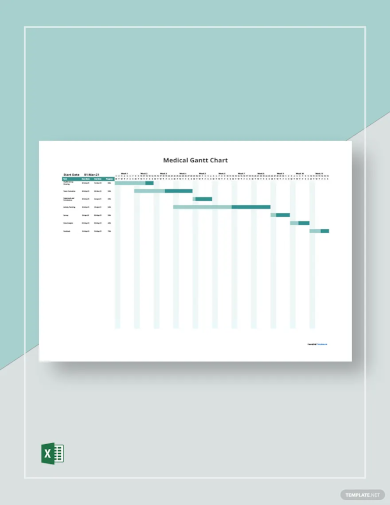
Blood Pressure Medical Chart Template

Sample Medical Gantt Chart Template
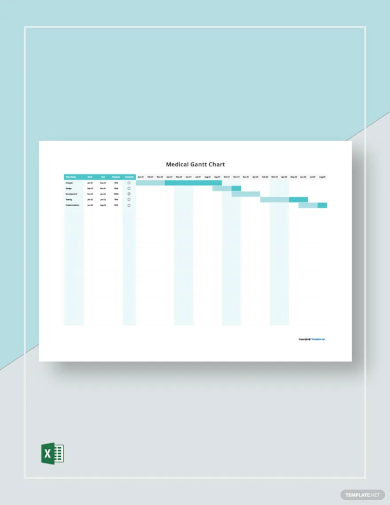
Hospital Medical Chart
Patient Medical Chart
Neurological Medical Chart
What Is a Medical Chart?
A medical chart is a chart which is primarily composed of a patient’s clinical status and medical history. Medical charts are often filled with medical notes usually written by a physician, a nurse, and other authorized medical personnel or members of the patient’s medical team. A medical chart basically keeps the physicians and other medical personnel informed about a patient’s overall health condition, to conduct the necessary procedures for the betterment of the patient’s health.
What Constitutes a Medical Chart?
Typically, a medical chart include information relevant to the determination of a patient’s overall health status. This essentially includes a patient’s medical information since birth. A medical chart needs to provide accurate information to the patient’s medical or healthcare team in order for them to provide proper care to the patient.
A medical chart typically includes the following information:
- Immunization or vaccination history
- Demographics (i.e. basic personal information)
- Surgical history including surgical records
- Obstetrics history (i.e. prior pregnancies and outcomes or complications, if any)
- Medications
- Allergies
- Habits (e.g. smoking, alcohol consumption, substance use, etc.)
- Previous and current illnesses (both minor and major)
- Family history (e.g. hereditary diseases or diseases common to the family)
- Social history (i.e. previous and current interaction with other individuals)
- Growth and development history
- Medical encounters (e.g. clinical check-ups, hospital admissions, etc.)
- Physical examination
- Laboratory test results
- Differential and final diagnosis
- Prescriptions
- Other information with relevance to the patient’s current health status and care
Information may vary from one hospital or clinic to another. Some may include additional information which is not included on the ones listed above.
Patient Drug Chart
Veterinary Medical
Medical Observation Chart
How to Create a Medical Chart
A medical chart is essential for determining the necessary course of action for the improvement of a patient’s overall health status. Creating a medical chart, therefore requires careful and critical thinking. Here are some things to consider in creating a medical chart.
- Know and understand the different medical terms involved. You need to be knowledgeable of the basic information to be included in a medical chart.
- Include all components of a medical chart. Refer to the list above for guidance.
- Make sure the information regarding the patient is accurate. Any errors must be corrected and addressed immediately to avoid any incidences which may harm or compromise the patient’s health.
- Follow the accepted protocol for creating and recording a medical chart.
- Keep the information on the records clear and specific. As much as possible, only include information which are useful and relevant to the patient’s medical records.
- Check and recheck a patient’s medical chart from time to time. Make sure to track the patient’s progress and condition on a regular basis.
17+ Medical Chart Examples to Download
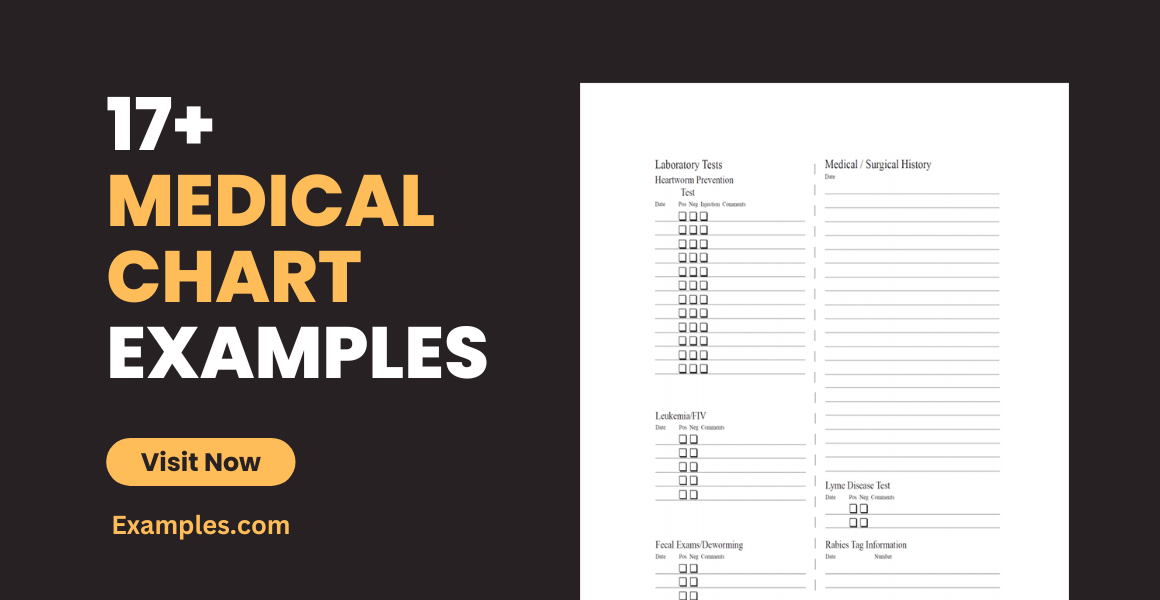
Different people have different levels of understanding. Many people are considered as visual learners, meaning they learn better through visual cues. A chart is among such visual representations of information.
Charts come in different types or kinds. Bar charts, pie charts, line charts, and flow charts are just few common examples of charts we are already familiar with. And as we know, there are different uses of charts, one of which we are going to discuss in this post.
Medical Center Organizational Chart Example

Details
File Format
Google Docs
MS Word
Pages
Editable PDF
Size: A4, US
Basic Medical Chart Template

Details
File Format
Illustrator
PDF
Size: 52 KB
Veterinary Medical Chart Template

Details
File Format
Illustrator
PDF
Size: 50 KB
Patient Medical Chart Template

Details
File Format
Illustrator
PDF
Size: 48 KB
Patient Medical Chart

Details
File Format
Illustrator
PDF
Size: 44 KB
Printable Medical Chart

Details
File Format
Illustrator
PDF
Size: 85 KB
Medical BMI Chart Template

Details
File Format
PDF
Size: 84 KB
Daily Medical Chart Template

Details
File Format
Illustrator
PDF
Size: 47 KB
Blank Medical Chart

Details
File Format
Illustrator
PDF
Size: 54 KB
Simple Medical Gantt Chart Template

Details
File Format
Excel
Size: 39 KB
Blood Pressure Medical Chart Template

Details
File Format
Illustrator
PDF
Size: 66 KB
Sample Medical Gantt Chart Template

Details
File Format
Illustrator
PDF
Size: 34 KB
Hospital Medical Chart
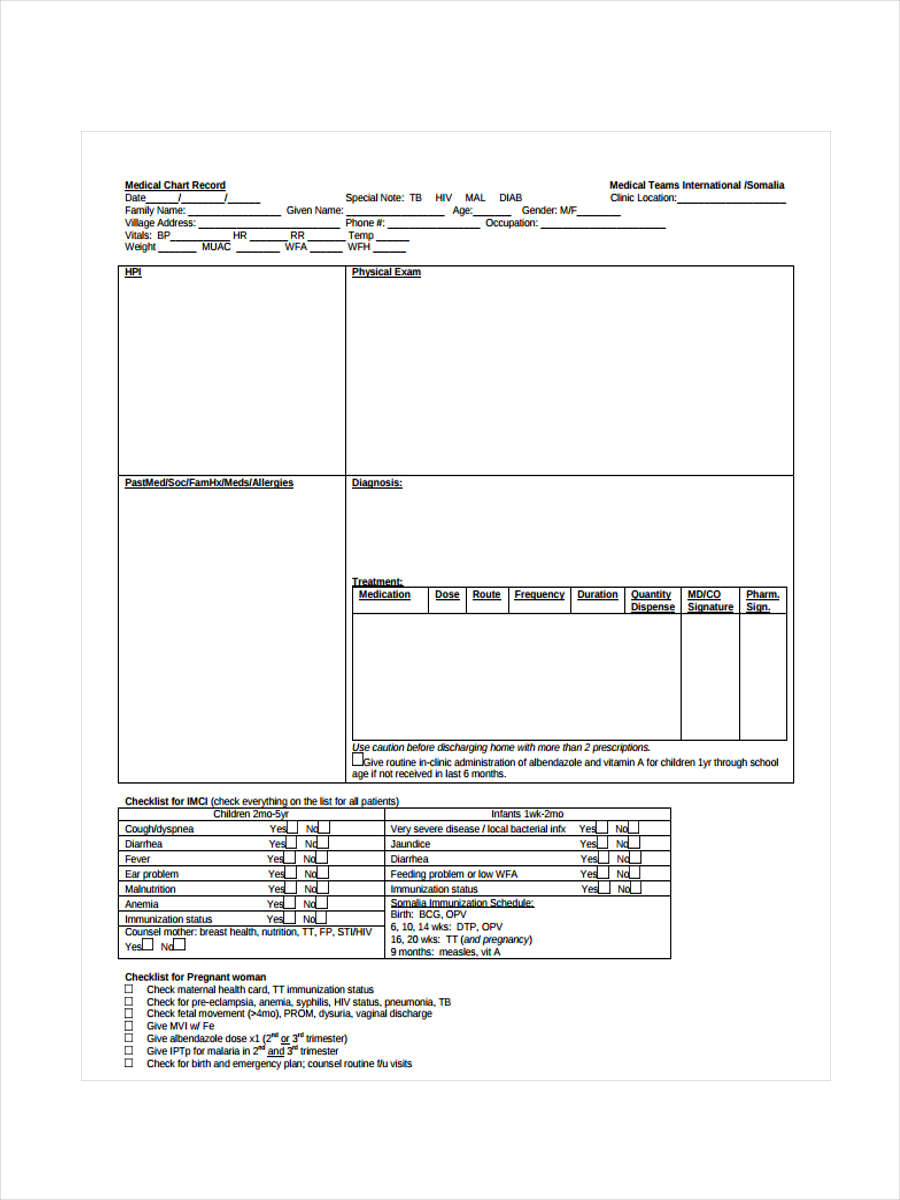
medicalteams.org
Details
File Format
PDF
Size: 23 KB
Patient Medical Chart
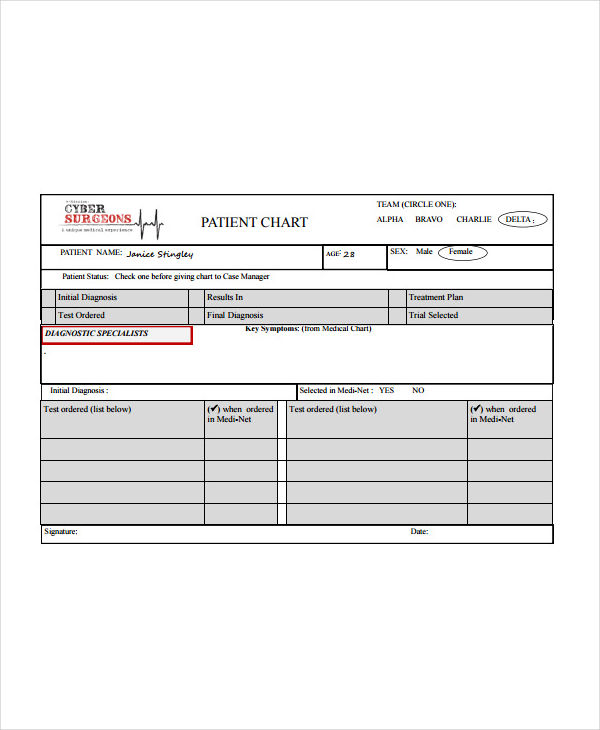
e-missions.net
Details
File Format
PDF
Size: 930 KB
Neurological Medical Chart
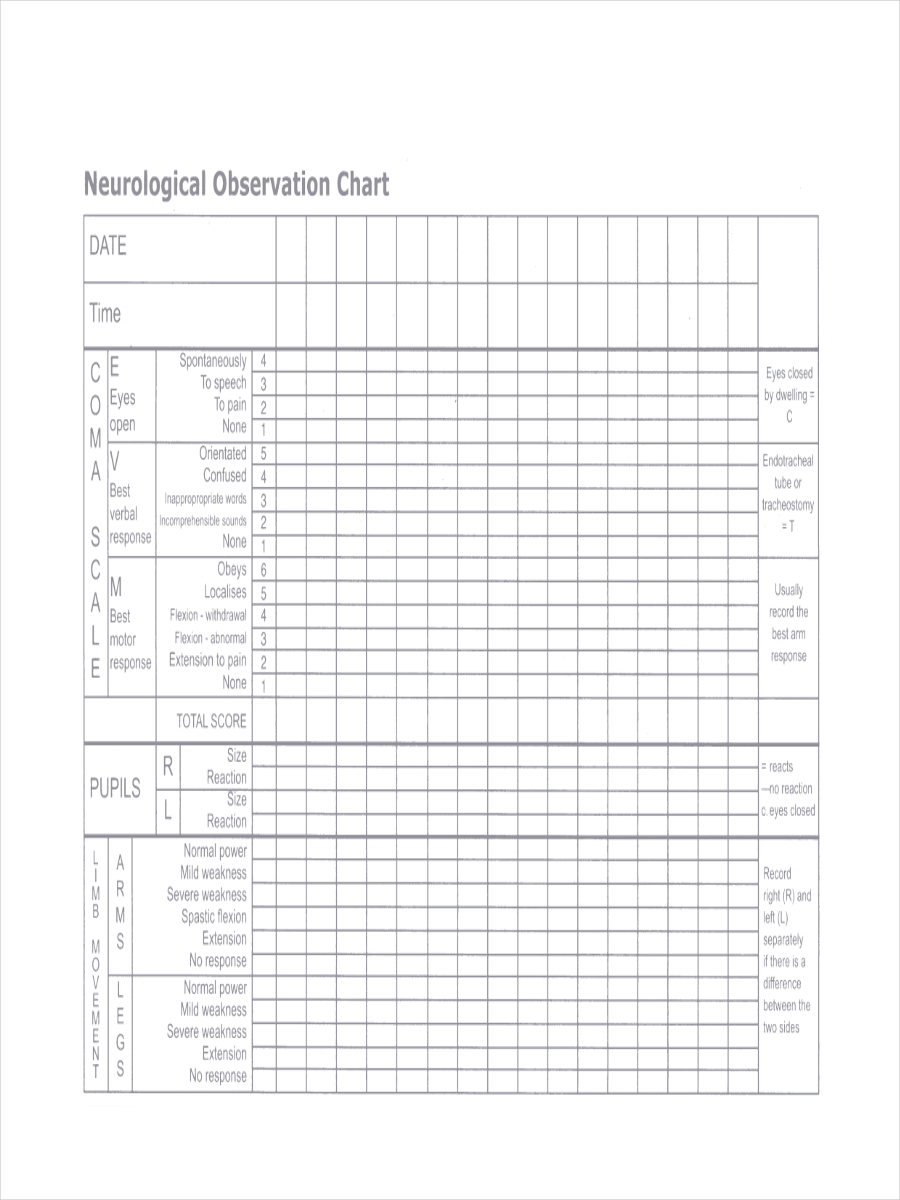
gla.ac.uk
Details
File Format
PDF
Size: 279 KB
What Is a Medical Chart?
A medical chart is a chart which is primarily composed of a patient’s clinical status and medical history. Medical charts are often filled with medical notes usually written by a physician, a nurse, and other authorized medical personnel or members of the patient’s medical team. A medical chart basically keeps the physicians and other medical personnel informed about a patient’s overall health condition, to conduct the necessary procedures for the betterment of the patient’s health.
What Constitutes a Medical Chart?
Typically, a medical chart include information relevant to the determination of a patient’s overall health status. This essentially includes a patient’s medical information since birth. A medical chart needs to provide accurate information to the patient’s medical or healthcare team in order for them to provide proper care to the patient.
A medical chart typically includes the following information:
Immunization or vaccination history
Demographics (i.e. basic personal information)
Surgical history including surgical records
Obstetrics history (i.e. prior pregnancies and outcomes or complications, if any)
Medications
Allergies
Habits (e.g. smoking, alcohol consumption, substance use, etc.)
Previous and current illnesses (both minor and major)
Family history (e.g. hereditary diseases or diseases common to the family)
Social history (i.e. previous and current interaction with other individuals)
Growth and development history
Medical encounters (e.g. clinical check-ups, hospital admissions, etc.)
Physical examination
Laboratory test results
Differential and final diagnosis
Prescriptions
Other information with relevance to the patient’s current health status and care
Information may vary from one hospital or clinic to another. Some may include additional information which is not included on the ones listed above.
Patient Drug Chart
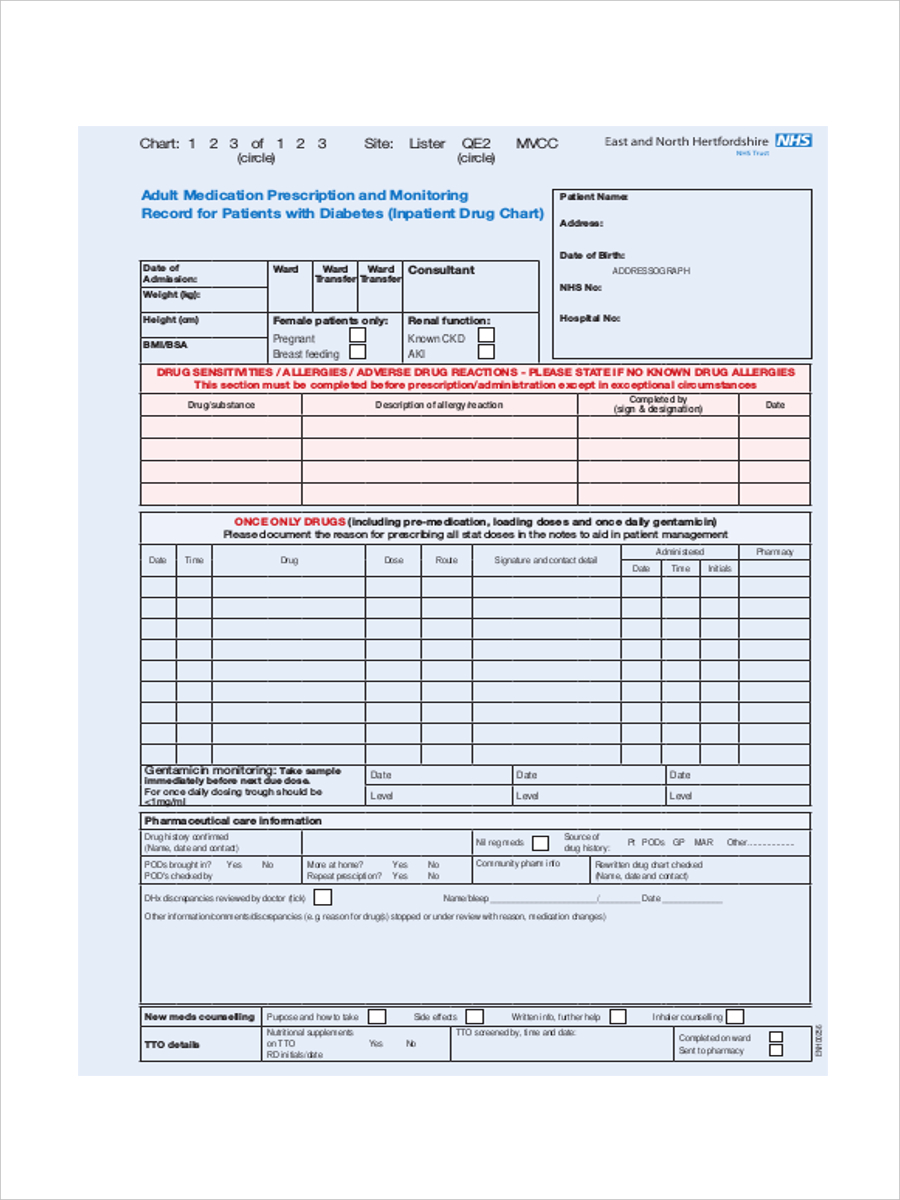
connect.qualityincare.org
Details
File Format
PDF
Size: 405 KB
Veterinary Medical

devon.gov.uk
Details
File Format
PDF
Size: 59 KB
Medical Observation Chart
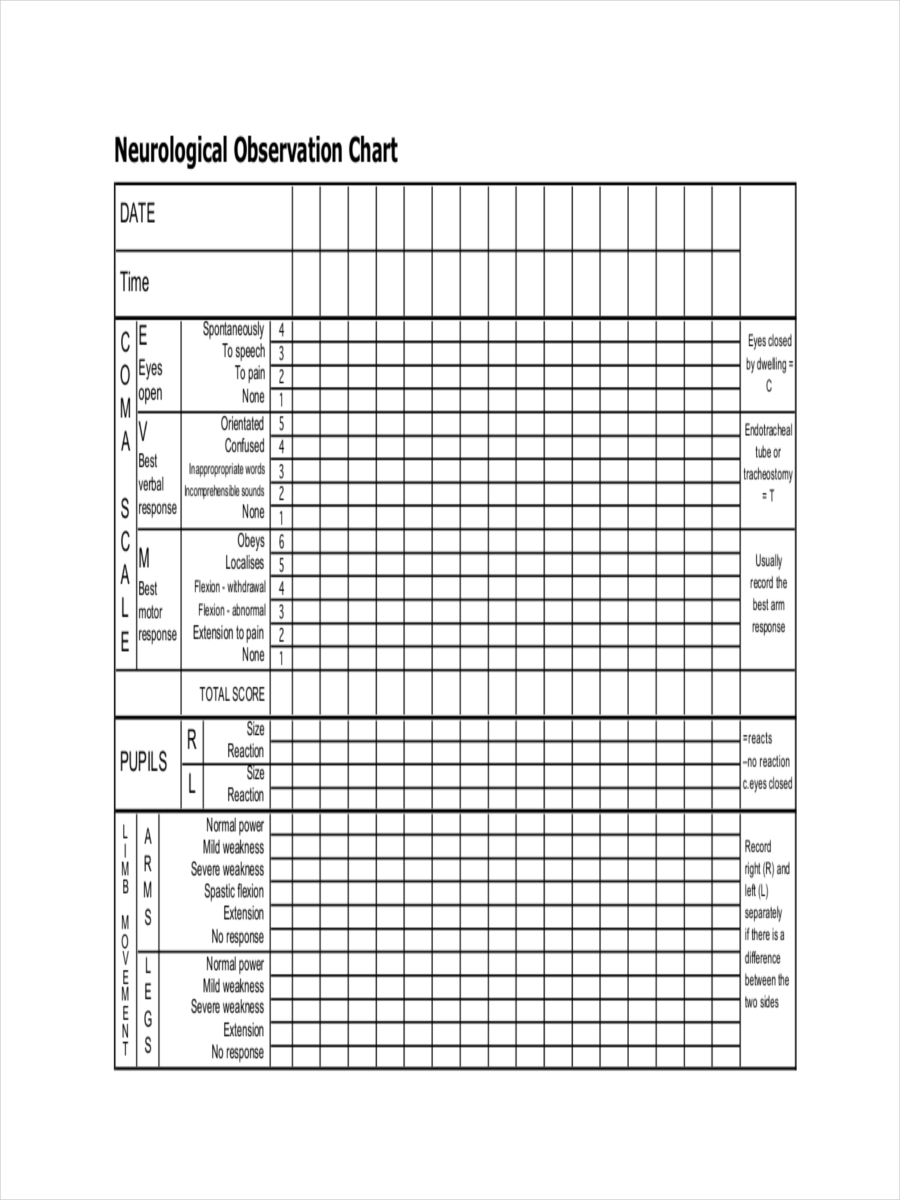
library.nhsggc.org.uk
Details
File Format
PDF
Size: 92 KB
How to Create a Medical Chart
A medical chart is essential for determining the necessary course of action for the improvement of a patient’s overall health status. Creating a medical chart, therefore requires careful and critical thinking. Here are some things to consider in creating a medical chart.
Know and understand the different medical terms involved. You need to be knowledgeable of the basic information to be included in a medical chart.
Include all components of a medical chart. Refer to the list above for guidance.
Make sure the information regarding the patient is accurate. Any errors must be corrected and addressed immediately to avoid any incidences which may harm or compromise the patient’s health.
Follow the accepted protocol for creating and recording a medical chart.
Keep the information on the records clear and specific. As much as possible, only include information which are useful and relevant to the patient’s medical records.
Check and recheck a patient’s medical chart from time to time. Make sure to track the patient’s progress and condition on a regular basis.

